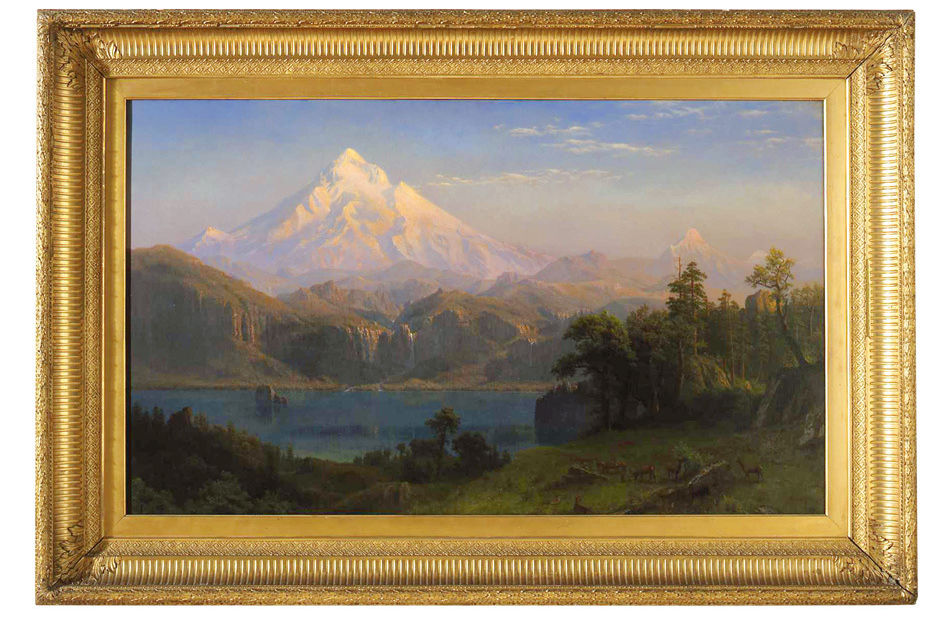Our Mountain

Mount Hood (1869) By Albert Bierstadt
Image: Portland Art Museum
Having spent a lot of time in Portland, Seattle, and Vancouver, BC—each a place with jawdropping views—I’ve developed a theory about cities, mountains, and vistas. My conclusion: in Portland, the trio works together best. The reasons are equal parts luck, inspiration, and design. Or what I’ll call “alpine determinism.”
As bumpy as a rumpled blanket, Seattle unfolds against a foreground of lakes, canals, and Puget Sound, while snowcapped peaks rise in the background, from the monstrous Mount Rainier to the jagged molars of the Olympics to the distant white ridges of the Northern Cascades. Vancouver, by contrast, sits on the flats of a tidal basin, Mount Baker looming on the southern horizon and the Coast Mountains more imposingly at hand. And Portland? With Mount Hood at a picture-perfect distance from the city, especially when seen from the amphitheater of the West Hills, the view seems to have been conjured by a painter’s imagination.
As these three cities grew beside their mountains, each developed its own distinct attitude toward the world. Ringed by striking panoramas, particularly westward toward the Sound, Seattle became a restless city constantly measuring itself against the wider world. Backed up against the Coast Mountain Range, Vancouver has little choice but to look west to Asia—and maybe because its setting so resembles that of Hong Kong, Asia has looked to it as well. And, given Portland’s location 80 miles inland, the Columbia River our only connection to the larger world, it’s not surprising that the most dominant feature of the landscape—Mount Hood—became the city’s focus: we the congregation, the volcano the altar.
Maybe painter Albert Bierstadt sensed Portland’s possibilities when he painted Hood in 1869. One of the mid-19th century’s most famous and flamboyant artists, Bierstadt took home world-record sums for his paintings and even charged admission to his shows. Though he never made an accurate painting in his life, preferring instead to collage together bits and pieces of the best landscapes he saw on journeys across the West, he played it pretty straight in his single portrait of Mount Hood. He painted the perspective of the volcano that Portlanders now know and love, but swapped out the dumpy little village then nicknamed “Stumptown” for the Columbia River and Multnomah Falls.
Bierstadt’s painting debuted at the Philadelphia Exposition of 1876 before being shipped to his London studio. While on a visit to London soon afterward, Simeon and Amanda Reed—the future founders of Reed College—bought the piece and packed it back home. It eventually landed at the Portland Art Museum in 1953, where it now hangs on permanent view.
Were Bierstadt standing today at the spot where he made his sketches, it’s easy to imagine that this time, dazzled by the way Portland’s skyline sparkles in the green and so politely bows at midpoint to gracefully vignette our mountain, he might just leave the city in.
